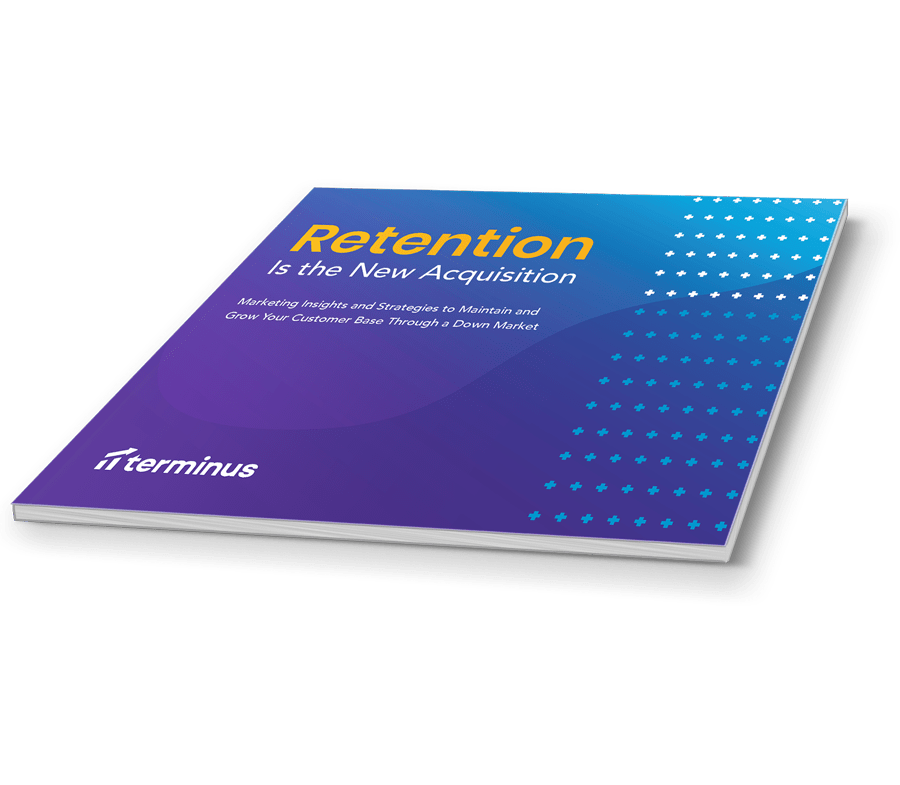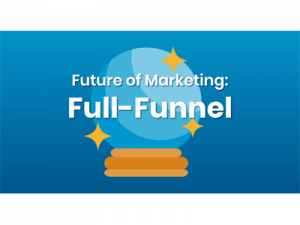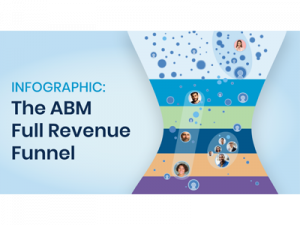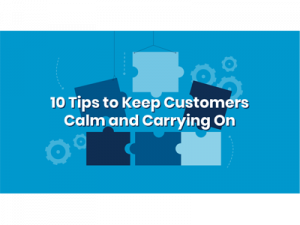Apply ABM to Your Account Management Strategy
Keep your brand in front of your most important customers with account based marketing. See how you can achieve strong net retention and produce more opportunities for expansion in this new Terminus ebook.


The #1 ABM Platform for Your Account Management Strategy
Learn more about the Terminus platform and how it gives account managers endless ways to stay in front of their most important customers. Increase adoption, reduce churn, and promote cross-sell opportunities.

The Future of Marketing is Full-Funnel: Perspective from Terminus CEO, Tim Kopp
learn more
The Account Based Marketing Full Revenue Funnel
READ MORE
10 Tips to Keep Customers Calm and Carrying On
learn moreAccount Management Strategy
When a company makes a decision to engage with Account-Based Marketing, it needs an account management strategy. An account management strategy includes everything from key account management tools, to individual employee accountability, and new account management processes. While account planning software can do a lot for a business, it can’t do everything. Employees need to be engaged, they need to understand how to identify key accounts, and they have to be able to appropriately utilize those key account management tools and templates.
If employees don’t understand why key account management is important, they aren’t going to be able to buy into an account growth strategy — regardless of how robust it is.
Educating employees about these new processes begins with an account management strategy presentation, and comprehensive materials that go beyond just a key account management PPT. They will need to learn key account management software, and they will have to understand how that software relates directly to the relationships they foster with their contacts. As they begin to learn more about ABM and account management strategies, they can get into more detailed information such as account mining vs account farming, and account mining strategy PPT and media. Accounts can be farmed, hunted, or mined; mining accounts involves getting more from existing accounts, farming involves trying to help customers get more of what they want, and hunting involves procuring new accounts altogether.
Planning, goals, people, and technology; everything has to work together. Terminus can help place your brand in front of your most important prospects and customers, regardless of your sales funnel. With the right planning solutions, companies are able to take their contacts from new accounts to new customers.
Account Management Framework
After understanding the basics of account management, it’s time to build an account management framework. An account management framework or account management structure is a template, structure, model, or general plan. Whatever the team calls it, it’s a set of detailed steps regarding how to get to your goals.
If you were to take a journey, you would plan out every step: your flights, hotels, rental car, and drive. An account management plan or account management process is very similar to this. Likely, the individual steps may be expressed in chunks of time, such as monthly or quarterly. But the general account management structure is essential. A key account management model should describe a customer’s relationship with you step by step.
If you’re trying to develop a key management model, Account Management for Dummies is an excellent resource. You can also take a look at a key account plan PDF, customer account plan template, or sales account transition plan template. Templates, examples, and case studies are the perfect place to learn.
From there, you can start to develop your company’s own client account plan, and your own customer success account plan template.
Processes and frameworks are important because they are a measure of success. Without a process, you cannot connect actions to results, and you don’t know what to improve or fine-tune if you aren’t getting the results you need. Being able to manage every step of the process also means that you’re able to track your process. Much like any science, your results have to be reproducible. If your entire team is doing things on their own, using different templates and strategies, there will be no consistency and you won’t be able to tell what is and isn’t working.
Additionally, processes and frameworks give you a starting point that isn’t overwhelming or too complex. You can follow the framework step-by-step rather than having to re-create the wheel.
Account Manager Tips
Account managers are really the heart-and-soul of the account management strategy, because they’re working so directly with their customers. There are certain key account manager skills, or soft skills, that are really necessary. They have to be a “people person,” they need to be extremely organized, and they have to be self-motivated and reliable. The best account manager skills and qualities have a lot to do with sales professional skills, but they also have to be more detail-oriented. Account managers get to know their accounts very well and become the entire core of the operation.
Here are some important account manager tips, related to key account manager skills and competencies:
- Know your technology. Account managers need to be able to utilize their technology inside and out, including everything from analysis to communication systems. It’s technology that lets account managers manage more than a handful of accounts.
- Go the distance. Disney uses something called “magical moments”; moments in which representatives are instructed to give out free things, or otherwise make someone feel special. These “magical moments” are baked into the experience and encourage better relationships.
- Create touch points. Make sure that you’re communicating with your clients often enough. As communication goes up, the chance of them actually engaging with you and converting does, too. You may find that they have needs that you weren’t aware of.
- Look for opportunities. Eventually, this becomes second nature. When you have new products and services, consider which clients are most likely to be able to use them. When talking to customers, explore their needs to find ways in which you can fill them.
- Learn from mistakes. At intervals, audit your own performance and see areas in which you might be able to improve. No one is perfect, but continuous improvement is what gets results.
Above all, global account management best practices need to include a thorough understanding of the benefits (and challenges) of account management. Account manager organization tips can only go so far; they need to understand things on a conceptual level.
Smart Goals for Account Managers
Account managers have to set goals. But often, those goals are fairly arbitrary. Of course, everyone wants to increase revenue. Everyone wants growth. But realistic goals are critical; otherwise they can feel so out of reach that they might as well not be worked towards at all.
Smart goals for account managers can be tricky, because realistic growth varies depending on the company. The company’s age, size, industry, and market all interact to create something that could be a realistic goal for any given account manager. And smaller goals need to work together to represent bigger goals. Rather than shooting for “greater revenue,” for instance, an account manager might start with increasing the number of contacts they have per week.
So let’s take a look at account manager goal examples. When it comes to strategic account manager performance goals, examples give the clearest insights:
- On a granular level, each account manager may want to maintain at least 1 touch point with their customers a month.
- They may also want to make 20 calls to new customers a day.
- Going broader now, they may want to also increase their customer roster by 10% a month.
- And importantly, they may want to achieve an 80 percent higher customer renewal rate.
- But finally, the major goal will be increasing revenue by at least 10% through better retention and acquisition.
If they don’t achieve their revenue goals, they can look to whether they are achieving better customer renewals, or acquiring new customers on pace. These key account management statistics become very important to modern account management, and these account goals will change over time. Furthermore, as these individual goals fluctuate, they can also see which factor is having the most influence on their final goal. They may find that failing to make calls to new customers doesn’t impact their overall revenue very significantly, but maintaining touch points does. This lets the sales team know where they need to allocate their resources.
Sales Plan Template
It’s always best to start with a sales plan template. There are many templates available for sales leaders, sales professionals, and account managers. A key account management plan template or a key account management template XLS will give a starting point to those who are new to account management.
Take a look at this deal coaching template from Terminus. Following such a template improves consistency, and ensures that sales leaders and sellers have all the information they need to both perform account management and analyze their account management. With this type of template, sales professionals are able to drill down to a customer’s needs with far greater reliability.
Of course, there are many templates available. To learn more, you can look at a strategic account plan template Salesforce provides, or any account management strategy template or account management structure template by Meddic, Bain, McKinsey, or Salesforce. Depending on the individual challenge or goal, there’s likely a template that can be a starting point.
Most companies have different needs in terms of relating to their customers. Some may need an account review presentation, others may need a general checklist of key account management McKinsey. Some may want to learn from a key account management strategy PDF, while others want a Meddic account plan template that will cover almost everything for them. With Meddic, Bain key account management, McKinsey, and others, there’s a lot to learn from. By looking at all the templates you can, you have a better understanding of how the relationship between customer and company works, and the most vital information to collect.
Over time, account managers will find themselves modifying their templates and making their own, as they gain a more thorough understanding of what their customers need and how they can deliver upon these needs. But managing templates and changing them in a consistent, process-managed way is essential to ensuring that changes are made and tested before they become a set part of the process.
Templates can be used in virtually every area of the sales plan and the sales strategy, as well. It doesn’t just include on-boarding documents or customer touch points, but can also include things such as strategic email blasts, newsletters, cold mailers, and more. Using templates means starting with tried-and-true media that has already provided results. Account management is a science, and digging more into those processes and procedures will always help heighten an account manager’s understanding of their discipline.



